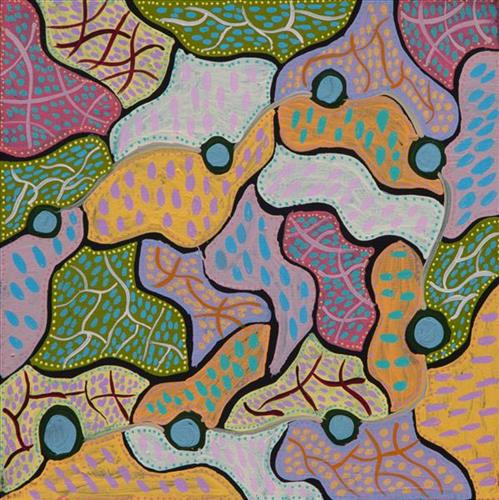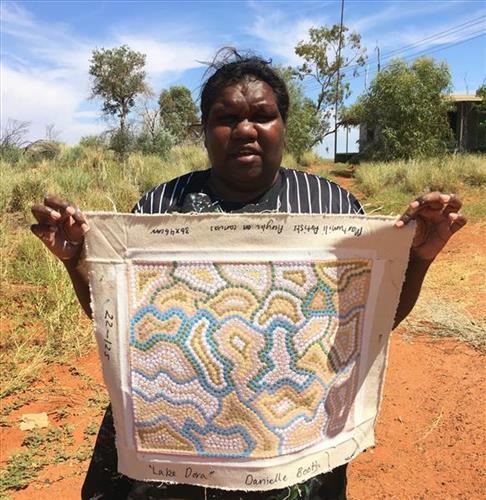111582164778
Well 33 to Well 40
Juntu-juntu (Canning Stock Route Well 30) is a waterhole located between the Karlamilyi (Rudall River) region and Kunawarritji Aboriginal Community, on the northern section of the Canning Stock Route. Kakarra (east) of Juntu-juntu are Warla-warla and Yaturti waterholes.
Prevalent in the area surrounding Juntu-juntu are jawirli (quondong) trees, providing one of the few bush fruits that comprised part of the pujiman (traditional, desert dwelling) diet. High in vitamin C, the fruit can be eaten raw or cooked, and was also prepared as a treatment for skin ailments due to its antibacterial properties.
The intersection of the Canning Stock Route with Juntu-juntu also made this a site of early contact with Europeans for many Martu then living a pujiman life in the desert. Following the route’s construction, Martu encountered Europeans and other Martu working as cattle drovers as they would travel up and down the Stock Route from water source to water source. Increasingly, pujimanpa (desert dwellers) followed the route to newly established ration depots, mission and pastoral stations. They were drawn to the route in search of food, by a sense of curiosity, or by loneliness. By the late 1950s and early 1960s, most of the desert family groups had left the desert. Eventually, these factors combined with an extreme and prolonged drought in the 1960s to prompt the few remaining pujimanpa to move in from the desert.




